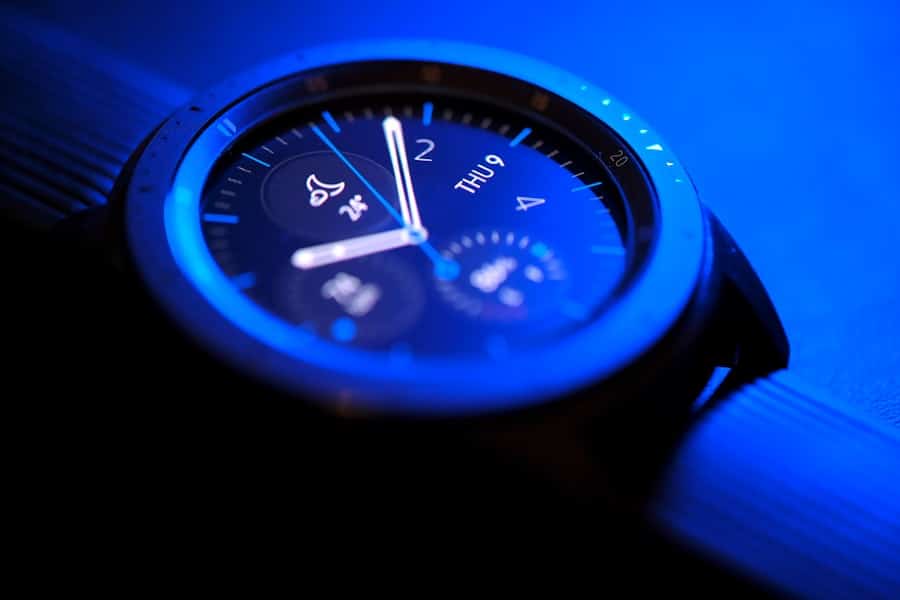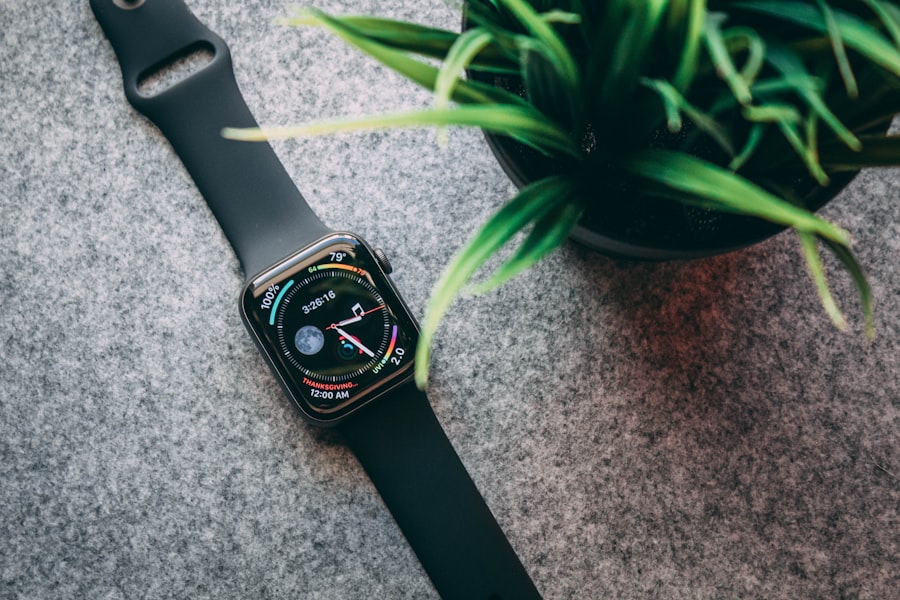The intersection of technology and mental health has given rise to innovative approaches that enhance traditional therapeutic methods. Among these advancements, wearables have emerged as a significant tool in the realm of Cognitive Behavioral Therapy (CBT). Wearable devices, which include smartwatches, fitness trackers, and other health-monitoring gadgets, are designed to collect data on various physiological and behavioral metrics.
As mental health issues continue to rise globally, the integration of wearables into therapeutic practices offers a promising avenue for improving patient outcomes. Cognitive Behavioral Therapy, a widely recognized form of psychotherapy, focuses on identifying and altering negative thought patterns and behaviors.
By combining CBT with wearable technology, therapists can gain insights into their patients’ daily lives, allowing for a more personalized approach to treatment. For instance, wearables can track physical activity levels, heart rate variability, and even sleep patterns, providing a comprehensive view of how these factors influence mental health. This synergy between technology and therapy not only enhances the therapeutic process but also empowers patients to take an active role in their mental well-being.
Key Takeaways
- Wearables are becoming increasingly integrated into cognitive behavioral therapy (CBT) to monitor and track behaviors, provide real-time feedback and interventions, promote mindfulness and stress reduction, and improve mental health through sleep tracking.
- Wearables play a crucial role in monitoring and tracking behaviors by collecting data on physical activity, sleep patterns, and physiological responses, providing therapists with valuable insights into their clients’ daily habits and routines.
- Wearables offer real-time feedback and interventions by delivering personalized notifications, reminders, and prompts to help individuals stay on track with their therapy goals and make real-time adjustments to their behaviors and thought patterns.
- Wearables can promote mindfulness and stress reduction through features such as guided breathing exercises, meditation prompts, and stress tracking, helping individuals develop healthier coping mechanisms and reduce anxiety and stress levels.
- Wearables can be incorporated into exposure therapy and desensitization by tracking physiological responses during exposure exercises, providing individuals and therapists with objective data to monitor progress and tailor treatment plans accordingly.
The Role of Wearables in Monitoring and Tracking Behaviors
Linking Physiological Responses to Emotional States
Studies have demonstrated the correlation between physiological responses and emotional states. For example, a study published in the journal “Nature” found that fluctuations in heart rate variability can be linked to anxiety levels.
Real-Time Insights for Timely Interventions
By utilizing wearables that monitor physiological responses, therapists can gain real-time insights into their patients’ emotional states, enabling timely interventions. Moreover, wearables can help patients become more aware of their behaviors and habits, which is crucial for mental health.
Encouraging Healthier Behaviors through Self-Monitoring
Wearables can encourage patients to engage in healthier behaviors by providing data on physical activity levels. This self-monitoring aspect is particularly beneficial in Cognitive Behavioral Therapy (CBT), where awareness of one’s thoughts and actions is essential for change.
How Wearables Provide Real-time Feedback and Interventions

One of the most transformative aspects of wearables in the context of CBT is their ability to provide real-time feedback. This immediate response can significantly enhance the therapeutic process by allowing patients to make adjustments to their behaviors as they occur. For instance, if a wearable device detects an increase in heart rate during a stressful situation, it can prompt the user with breathing exercises or mindfulness techniques designed to mitigate anxiety.
This kind of instant feedback can reinforce positive coping strategies and help patients develop healthier responses to stressors. Additionally, wearables can facilitate remote interventions from therapists. Through connected applications, therapists can monitor their patients’ data and provide timely guidance based on the information collected.
For example, if a therapist notices that a patient’s physical activity levels have dropped significantly over a week, they might reach out to discuss potential barriers to exercise or suggest strategies to re-engage with physical activity. This level of engagement fosters a collaborative therapeutic relationship and ensures that patients feel supported throughout their journey.
The Use of Wearables in Promoting Mindfulness and Stress Reduction
Mindfulness practices have gained traction as effective tools for managing stress and enhancing mental well-being. Wearable devices can play a pivotal role in promoting mindfulness by integrating features that encourage users to engage in mindfulness exercises throughout their day. Many wearables come equipped with guided meditation sessions or breathing exercises that users can access at any time.
For instance, devices like the Apple Watch or Fitbit offer reminders to take breaks for mindfulness practices, helping users cultivate a habit of self-care amidst their busy lives. Furthermore, the data collected by wearables can enhance mindfulness practices by providing insights into how different activities affect stress levels. For example, if a user notices that their heart rate decreases after engaging in a specific mindfulness exercise, they may be more inclined to incorporate that practice into their daily routine.
This feedback loop reinforces the benefits of mindfulness and encourages users to explore various techniques that resonate with them personally. By integrating mindfulness into daily life through wearables, individuals can develop resilience against stressors and improve their overall mental health.
Incorporating Wearables into Exposure Therapy and Desensitization
Exposure therapy is a well-established technique within CBT that involves gradually exposing patients to feared stimuli in a controlled manner to reduce anxiety over time. Wearable technology can enhance this process by providing real-time data on physiological responses during exposure exercises. For instance, if a patient is undergoing exposure therapy for social anxiety, a wearable device can monitor heart rate and sweat levels as they engage in social situations.
This data allows therapists to assess the effectiveness of the exposure and make necessary adjustments to the treatment plan. Moreover, wearables can facilitate gradual exposure by allowing patients to engage with feared stimuli in a safe environment before facing them in real life. For example, virtual reality (VR) combined with wearables can create immersive experiences where patients confront their fears while receiving physiological feedback.
This innovative approach not only makes exposure therapy more engaging but also provides therapists with valuable insights into how patients respond to various levels of exposure. As technology continues to evolve, the potential for wearables in enhancing exposure therapy becomes increasingly promising.
Wearables and Sleep Tracking for Improving Mental Health

Sleep is intricately linked to mental health, with poor sleep quality often exacerbating conditions such as anxiety and depression. Wearable devices equipped with sleep tracking capabilities offer valuable insights into sleep patterns and quality. By monitoring metrics such as sleep duration, restlessness, and sleep stages, these devices provide users with a comprehensive understanding of their sleep habits.
For instance, research has shown that individuals with insomnia often experience disrupted sleep cycles; wearables can help identify these disruptions and encourage users to adopt healthier sleep practices. Incorporating sleep data into CBT can lead to more effective treatment plans tailored to individual needs. Therapists can work with patients to address specific sleep issues identified through wearable data.
For example, if a patient consistently reports poor sleep quality correlated with high stress levels during the day, therapists might introduce cognitive restructuring techniques aimed at reducing anxiety before bedtime. By addressing sleep issues within the context of CBT, patients can experience improvements not only in their sleep quality but also in their overall mental health.
Ethical Considerations and Privacy Concerns with Wearables in Therapy
While the integration of wearables into CBT presents numerous benefits, it also raises important ethical considerations and privacy concerns that must be addressed. The collection of sensitive health data through wearable devices necessitates stringent measures to protect patient privacy. Patients must be informed about how their data will be used, stored, and shared, ensuring transparency throughout the therapeutic process.
Additionally, therapists must navigate the complexities of data ownership and consent when utilizing wearable technology in treatment. Another ethical concern revolves around the potential for over-reliance on technology in therapy. While wearables provide valuable insights, they should not replace traditional therapeutic methods or human interaction.
Therapists must strike a balance between leveraging technology for enhanced treatment while maintaining the essential human connection that is fundamental to effective therapy. Furthermore, there is a risk that individuals may misinterpret data from wearables or become overly fixated on metrics, leading to increased anxiety rather than relief. Addressing these concerns requires ongoing dialogue among mental health professionals, technologists, and patients.
Future Directions and Potential of Wearables in Cognitive Behavioral Therapy
The future of wearables in Cognitive Behavioral Therapy holds immense potential as technology continues to advance at an unprecedented pace. Innovations such as artificial intelligence (AI) could further enhance the capabilities of wearable devices by providing personalized recommendations based on individual data patterns. For instance, AI algorithms could analyze a patient’s historical data to predict potential triggers for anxiety or depression and suggest proactive strategies for management.
Moreover, as telehealth becomes increasingly prevalent, wearables could play a vital role in remote therapy sessions by providing therapists with real-time data on their patients’ mental health status during virtual consultations.
Additionally, as public awareness of mental health issues grows, there may be an increased demand for accessible tools like wearables that empower individuals to take charge of their mental well-being.
In conclusion, the integration of wearable technology into Cognitive Behavioral Therapy represents a significant advancement in mental health treatment. By providing continuous monitoring, real-time feedback, and personalized interventions, wearables have the potential to enhance therapeutic outcomes while promoting self-awareness among patients. As we move forward into an era where technology plays an increasingly central role in healthcare, it is essential to navigate the ethical considerations surrounding privacy and data security while harnessing the transformative power of wearables for mental health improvement.
A related article to How Wearables Support Cognitive Behavioral Therapy is “Experience the Power of Samsung Galaxy Tab S8: The Ultimate Tablet.” This article discusses the features and capabilities of the Samsung Galaxy Tab S8, which could potentially be used in conjunction with wearables to enhance cognitive behavioral therapy sessions. To learn more about this powerful tablet, you can check out the article here.
FAQs
What is Cognitive Behavioral Therapy (CBT)?
Cognitive Behavioral Therapy (CBT) is a type of psychotherapy that focuses on helping individuals identify and change negative thought patterns and behaviors. It is commonly used to treat a variety of mental health conditions, including anxiety, depression, and PTSD.
How do wearables support Cognitive Behavioral Therapy?
Wearables, such as smartwatches and fitness trackers, can support CBT by providing individuals with real-time data on their physical and emotional states. This data can help individuals and their therapists track progress, identify triggers, and make informed decisions about treatment.
What types of data can wearables collect to support CBT?
Wearables can collect a wide range of data, including heart rate, sleep patterns, activity levels, and even stress levels. This data can provide valuable insights into an individual’s physical and emotional well-being, which can be used to inform CBT treatment.
How can wearables improve the effectiveness of CBT?
By providing real-time data on an individual’s physical and emotional states, wearables can help therapists and individuals identify patterns and triggers that may be contributing to their mental health issues. This can lead to more targeted and effective CBT interventions.
Are there any limitations to using wearables in CBT?
While wearables can provide valuable data to support CBT, there are limitations to their use. For example, not all individuals may have access to or be comfortable using wearable technology. Additionally, the accuracy and reliability of wearable data may vary. It’s important for therapists and individuals to use this data as one tool among many in the CBT process.

